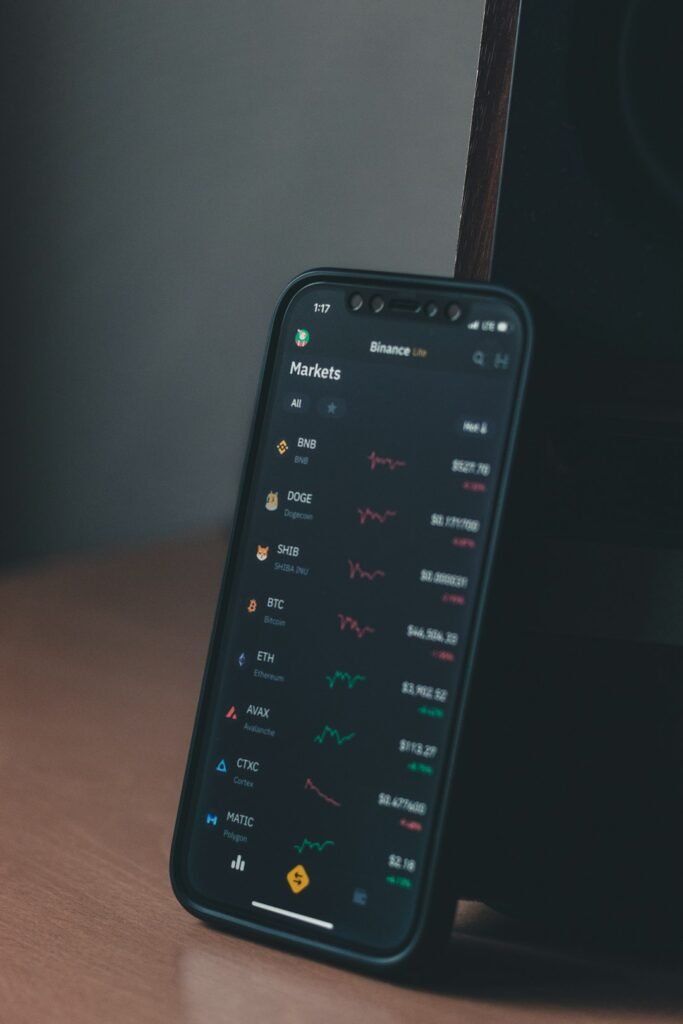The Institutional Edge: How Advanced Portfolio Management Systems are Reshaping Crypto Hedge Fund Strategies The digital asset landscape is no longer the wild west. For hedge funds navigating the volatile yet lucrative world of cryptocurrencies, the key to sustainable alpha generation is no longer just about picking the right tokens—it's about deploying institutional-grade infrastructure. The complexity of managing a crypto investment portfolio, with its 24/7 markets, fragmented liquidity, and unique settlement processes, demands a technological solution that goes beyond traditional finance tools. Enter the specialized asset management system, a platform engineered to monitor, optimize, and de-risk crypto investments at scale. For forward-thinking hedge funds, the question is no longer if they need such a system, but which one provides the definitive competitive advantage. The shift is from manual, reactive management to a data-driven, automated, and holistic approach to portfolio oversight. Beyond Spreadsheets: Confronting the Operational Nightmare of Crypto Before the advent of dedicated portfolio management systems (PMS), fund managers often relied on a precarious patchwork of spreadsheets, exchange-native dashboards, and manual reconciliation. This approach is fraught with inefficiencies and risks: Fragmented Liquidity: Accessing the best prices requires connecting to dozens of global trading venues. Managing separate connections, APIs, and credit lines for each exchange is a massive operational burden. Data Silos: Critical data—positions, P&L, risk exposure—is scattered across multiple platforms. Gaining a unified, real-time view of the entire portfolio is nearly impossible, leading to delayed and uninformed decision-making. Settlement and Reconciliation Hell: The manual process of matching trades, tracking movements, and ensuring accurate settlement across blockchains and custodians is time-consuming and error-prone. Inadequate Risk Management: Without integrated tools for value-at-risk (VaR) calculations, stress testing, and scenario analysis, funds are flying blind into one of the most volatile asset classes known. This operational complexity is not just an inconvenience; it directly impacts performance through slippage, missed opportunities, and unmanaged risks. As one portfolio manager from Arc Capital noted, the need for reliable execution is paramount: "Talos has been an integral part of our trade execution workflow, enabling reliable algorithms that ensure cost-efficient order fills across a variety of exchanges and instruments." The Core Pillars of a Modern Crypto Asset Management System A sophisticated system addresses these challenges head-on by integrating several critical functionalities into a single, seamless platform. The goal is to provide a unified operating system for digital asset investing. 1. Liquidity Aggregation and Advanced Execution The foundation of any trading operation is access to liquidity. A top-tier PMS does not merely connect to exchanges; it aggregates liquidity and pricing from over 40 of the world’s leading trading venues into a single, coherent order book. This eliminates the need for fund managers to juggle multiple systems. Streamlined Access: Instead of managing dozens of logins and relationships, traders interact with a single interface that provides a consolidated view of the market. Best Execution: Advanced smart order routing algorithms scan the aggregated liquidity to find the best available prices, minimizing slippage and improving fill rates for large orders. This creates a world-class connectivity layer, as acknowledged by Chris Zuehlke of Cumberland: "Talos's ability to streamline liquidity connectivity in the digital asset ecosystem has proven itself to be world-class." 2. Comprehensive Portfolio Management and Analytics Once execution is streamlined, the focus shifts to oversight. The PMS becomes the central nervous system for the fund, offering real-time visibility into every aspect of the portfolio. Real-Time Monitoring: Track positions, P&L, and exposure across all connected venues and wallets on a single dashboard. This real-time data is crucial for making swift decisions in fast-moving markets. Performance Attribution: Understand the drivers of returns by analyzing the performance of individual strategies, assets, and trades. This allows portfolio managers to double down on what works and eliminate what doesn’t. Portfolio Construction and Rebalancing: Utilize sophisticated tools to model different portfolio allocations, simulate strategies, and execute rebalancing trades efficiently to maintain target weights. 3. Institutional-Grade Risk Management In crypto, risk management is not a feature; it is the product. An institutional PMS embeds risk controls directly into the trading workflow. Portfolio and Risk Management: The system provides tools for sophisticated risk analysis, including VaR, stress testing, and scenario analysis. Managers can model the impact of extreme market events on their portfolio before they happen. Proactive Hedging: Identify and evaluate the negative impact of adverse market conditions and implement proactive hedging strategies to protect capital. Compliance and Governance: Built-in controls help ensure that trading activities adhere to internal risk limits and external regulatory requirements, a critical factor for institutional adoption. As Secure Digital Markets' Mostafa Al-Mashita stated, "By applying traditional finance standards, they reduce the barriers for institutions entering the digital asset space." 4. Automated Reconciliation and Settlement The post-trade process is where many operational errors occur. Automating this back-office function is a massive efficiency gain. Reconciliation and Settlement: Automatically match trade data from execution venues with settlement confirmations from custodians, drastically reducing operational workload and the potential for errors. Unified Treasury Management: Gain a clear picture of cash and crypto balances across the ecosystem, ensuring capital is optimally allocated and ready to meet obligations like redemptions or margin calls. The Tangible Benefits: From Survival to Superior Performance Implementing a robust asset management system transforms a hedge fund's operations from a constant firefight into a streamlined, strategic advantage. The benefits are measurable: Improved Operational Efficiency: By eliminating the need to manage different systems, funds can reallocate precious human capital from manual tasks to high-value strategic analysis. Enhanced Decision-Making: A single source of truth with real-time analytics empowers portfolio managers with the insights needed to act with confidence and speed. Reduced Costs: Better execution prices, automated back-office functions, and reduced errors all contribute to a lower cost base, directly boosting the fund's bottom line. Scalability: A platform designed for institutional volumes allows a fund to scale its trading operations seamlessly without hitting technological bottlenecks. As Bob Wallden of Abra highlighted, "Their technology is designed to scale seamlessly and has allowed us to improve our trading capabilities." Institutional Credibility: Using a platform that has undergone rigorous security audits, like a SOC 2 Type 2 examination, signals to institutional investors that the fund operates with the highest standards of security and reliability. The Future is Integrated The evolution of these systems is moving toward a fully integrated investment lifecycle platform. The combination of an Order Management System (OEMS) for trade generation and a PMS for post-trade analysis creates a closed-loop environment where insights from the portfolio directly inform future trading strategies. This integration delivers a full investment lifecycle platform, a necessity for hedge funds aiming to stay ahead of the curve. The message from the front lines is clear. As Graham Rodford, CEO of Archax, put it, "By partnering with Talos, we're set to offer unparalleled liquidity, reliability, and robustness to the global institutional trading community." In the competitive arena of crypto hedge funds, superior technology is no longer a luxury—it is the bedrock of sustainable performance. The funds that embrace these advanced asset management systems are the ones positioning themselves to not only survive market cycles but to thrive within them, turning the inherent complexity of crypto into their greatest strategic asset.












